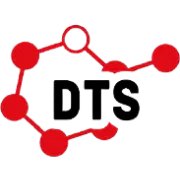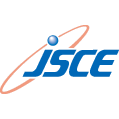|
|
|
|
Pennsylvania State University
85 publications, 1.28%
|
|
|
Cornell University
65 publications, 0.98%
|
|
|
University of Minnesota
54 publications, 0.81%
|
|
|
Iowa State University
31 publications, 0.47%
|
|
|
Columbia University
30 publications, 0.45%
|
|
|
University of California, Berkeley
30 publications, 0.45%
|
|
|
Colorado State University
27 publications, 0.41%
|
|
|
University of Maryland, College Park
22 publications, 0.33%
|
|
|
Virginia Tech
19 publications, 0.29%
|
|
|
University of California, Davis
19 publications, 0.29%
|
|
|
University of Tennessee
19 publications, 0.29%
|
|
|
University of Hawaiʻi at Mānoa
17 publications, 0.26%
|
|
|
University of Arizona
16 publications, 0.24%
|
|
|
Washington State University
15 publications, 0.23%
|
|
|
Food and Drug Administration
15 publications, 0.23%
|
|
|
Michigan State University
13 publications, 0.2%
|
|
|
Syracuse University
13 publications, 0.2%
|
|
|
Harvard University
13 publications, 0.2%
|
|
|
University of Illinois Urbana-Champaign
13 publications, 0.2%
|
|
|
University of Nebraska–Lincoln
13 publications, 0.2%
|
|
|
University of Massachusetts Amherst
13 publications, 0.2%
|
|
|
University of Maryland, Baltimore
12 publications, 0.18%
|
|
|
University of Guelph
12 publications, 0.18%
|
|
|
Rutgers, The State University of New Jersey
11 publications, 0.17%
|
|
|
Ohio State University
11 publications, 0.17%
|
|
|
University of Wisconsin–Madison
11 publications, 0.17%
|
|
|
Kansas State University
11 publications, 0.17%
|
|
|
University of Florida
11 publications, 0.17%
|
|
|
University of North Carolina at Chapel Hill
11 publications, 0.17%
|
|
|
National Cancer Institute
11 publications, 0.17%
|
|
|
Oregon State University
10 publications, 0.15%
|
|
|
Northern Illinois University
10 publications, 0.15%
|
|
|
Temple University
10 publications, 0.15%
|
|
|
Stanford University
9 publications, 0.14%
|
|
|
New York University
9 publications, 0.14%
|
|
|
Emory University
9 publications, 0.14%
|
|
|
University of Connecticut
9 publications, 0.14%
|
|
|
North Dakota State University
8 publications, 0.12%
|
|
|
North Carolina State University
8 publications, 0.12%
|
|
|
Tufts University
8 publications, 0.12%
|
|
|
Purdue University
8 publications, 0.12%
|
|
|
University of Toronto
8 publications, 0.12%
|
|
|
University of Delaware
8 publications, 0.12%
|
|
|
University of Washington
7 publications, 0.11%
|
|
|
Fred Hutchinson Cancer Center
7 publications, 0.11%
|
|
|
University of Pennsylvania
7 publications, 0.11%
|
|
|
National Heart, Lung, and Blood Institute
7 publications, 0.11%
|
|
|
University of North Carolina at Greensboro
7 publications, 0.11%
|
|
|
University of Alabama at Birmingham
7 publications, 0.11%
|
|
|
University of Idaho
7 publications, 0.11%
|
|
|
Montclair State University
7 publications, 0.11%
|
|
|
Florida State University
6 publications, 0.09%
|
|
|
Johns Hopkins University
6 publications, 0.09%
|
|
|
Commonwealth Scientific and Industrial Research Organization
6 publications, 0.09%
|
|
|
Boston University
6 publications, 0.09%
|
|
|
Auburn University
6 publications, 0.09%
|
|
|
Arizona State University
6 publications, 0.09%
|
|
|
University of Illinois at Chicago
6 publications, 0.09%
|
|
|
University of California, San Francisco
6 publications, 0.09%
|
|
|
San Diego State University
6 publications, 0.09%
|
|
|
Eastern Illinois University
6 publications, 0.09%
|
|
|
Georgia State University
6 publications, 0.09%
|
|
|
University of Michigan
6 publications, 0.09%
|
|
|
University of British Columbia
6 publications, 0.09%
|
|
|
University of Wisconsin–Stout
6 publications, 0.09%
|
|
|
East Carolina University
6 publications, 0.09%
|
|
|
Louisiana State University
6 publications, 0.09%
|
|
|
University of Cincinnati
6 publications, 0.09%
|
|
|
Utah State University
6 publications, 0.09%
|
|
|
University of Missouri
6 publications, 0.09%
|
|
|
University of Arkansas at Fayetteville
6 publications, 0.09%
|
|
|
University of Nevada, Reno
6 publications, 0.09%
|
|
|
University of Wyoming
6 publications, 0.09%
|
|
|
McGill University
5 publications, 0.08%
|
|
|
Brown University
5 publications, 0.08%
|
|
|
University of Texas MD Anderson Cancer Center
5 publications, 0.08%
|
|
|
Texas Woman's University
5 publications, 0.08%
|
|
|
Oklahoma State University
5 publications, 0.08%
|
|
|
University of Vermont
5 publications, 0.08%
|
|
|
University of Pittsburgh
5 publications, 0.08%
|
|
|
Dana-Farber Cancer Institute
4 publications, 0.06%
|
|
|
Rush University
4 publications, 0.06%
|
|
|
University of Texas at Austin
4 publications, 0.06%
|
|
|
Southern Illinois University Carbondale
4 publications, 0.06%
|
|
|
Eastern Michigan University
4 publications, 0.06%
|
|
|
University of Central Missouri
4 publications, 0.06%
|
|
|
California State University, Long Beach
4 publications, 0.06%
|
|
|
Hebrew University of Jerusalem
3 publications, 0.05%
|
|
|
Hadassah Medical Center
3 publications, 0.05%
|
|
|
Case Western Reserve University
3 publications, 0.05%
|
|
|
University of California, Los Angeles
3 publications, 0.05%
|
|
|
University of California, San Diego
3 publications, 0.05%
|
|
|
Vanderbilt University
3 publications, 0.05%
|
|
|
McMaster University
3 publications, 0.05%
|
|
|
University of Wisconsin–Extension
3 publications, 0.05%
|
|
|
Western Carolina University
3 publications, 0.05%
|
|
|
Florida International University
3 publications, 0.05%
|
|
|
University of Saskatchewan
3 publications, 0.05%
|
|
|
University of Kentucky
3 publications, 0.05%
|
|
|
Texas Tech University
3 publications, 0.05%
|
|
|
|
|












































































































































































